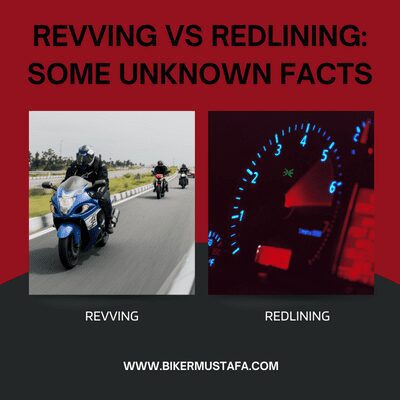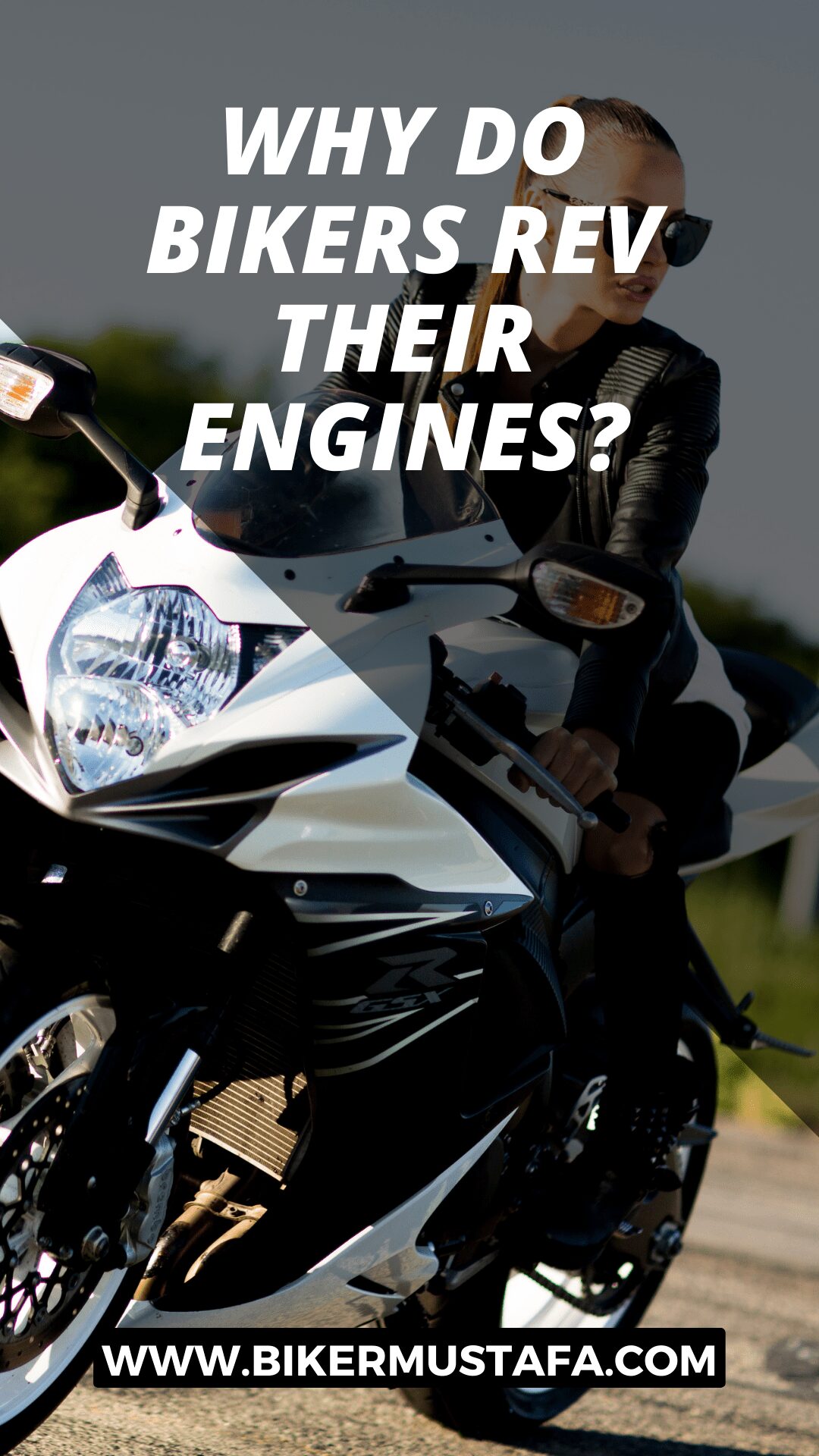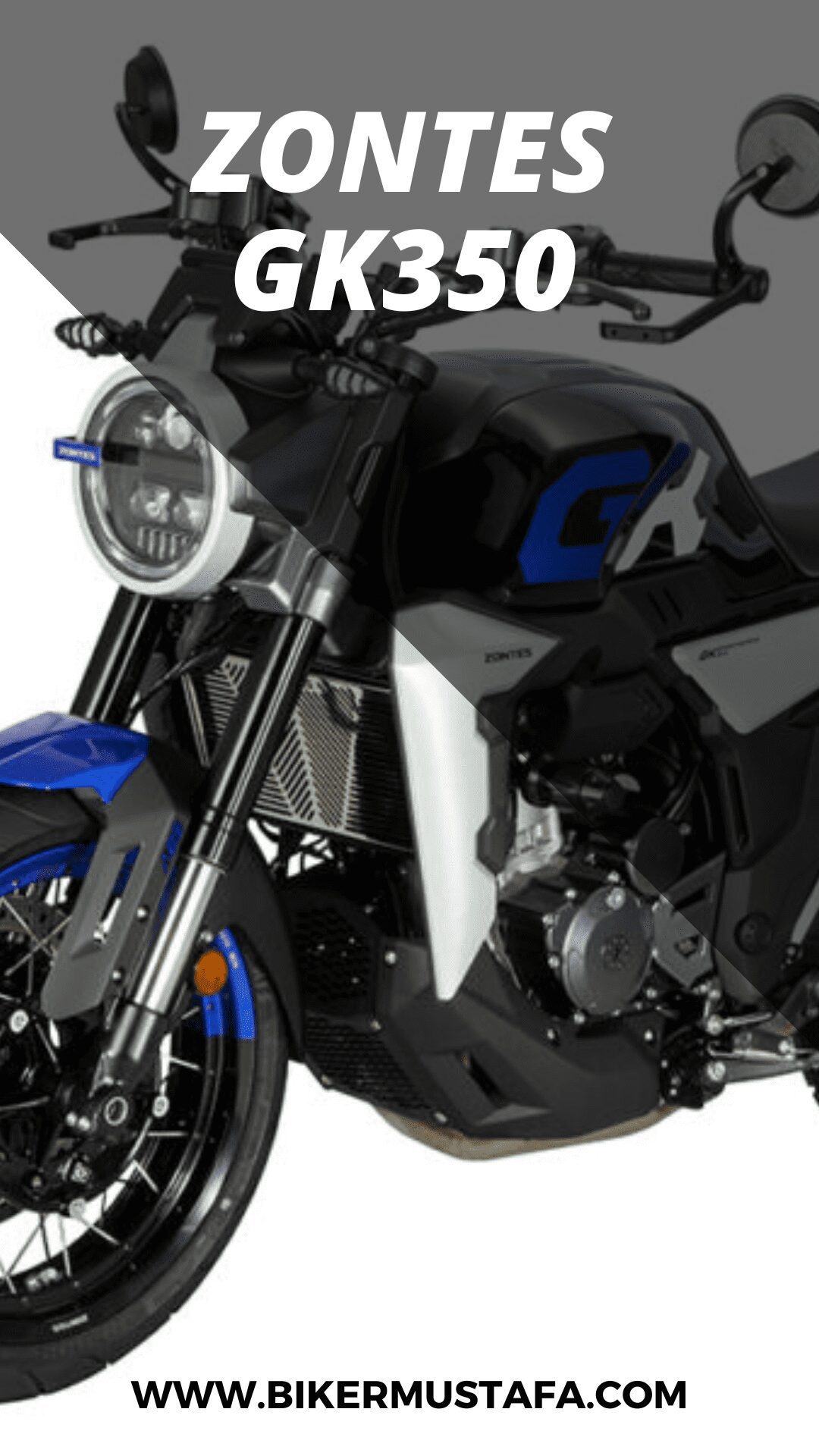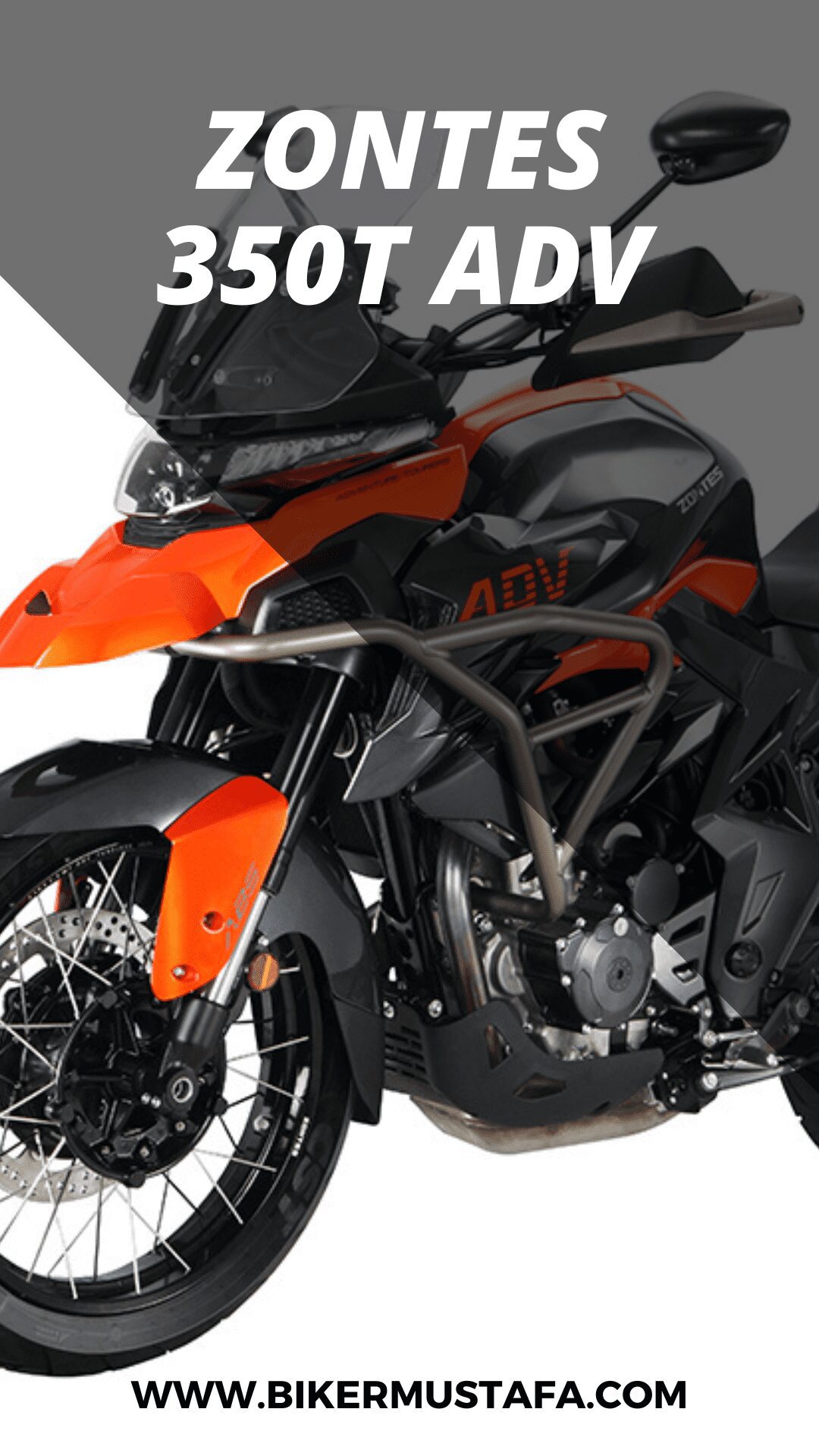Why Do Bikers Rev Their Engines?
The average motorbike has a higher rev limit than the typical car due to a few essential considerations. Understanding these features will help you choose the best motorcycle for your needs and preferences as a rider.
Motorcycle engines may rev so high because they often have an oversquare bore and short stroke. The piston travels a shorter distance for each complete crankshaft rotation, resulting in higher RPMs. Since motorcycles are much lighter than cars, they require less torque.
The Reason Motorcycle Engines Rev So High (Technical Deep Dive)

Similar to a car engine, a conventional motorbike engine typically consists of a crankshaft, one or more pistons, and connecting rod(s) to span the gap. Some engines (piston and connecting rod pairings) only have one cylinder. The connecting rod is used to attach the piston to the crankshaft. The crankshaft rotates, and the pistons rise and fall when the engine runs.
The height of the piston at the top dead centre is subtracted from the height of the piston at the bottom dead centre to determine the engine’s stroke. A high point (TDC) and a low point (LDC) are reached by the piston as the crankshaft completes one full rotation thanks to the connecting rod’s two fixed places of attachment to the piston (BDC).
For a typical four-bike internal combustion engine, the piston first rises toward the cylinder head, compresses the air-fuel mixture in the combustion chamber, and the spark plug ignites the mixture. Finally, the explosion pulls the piston back down the cylinder. This process produces power.
Typically, a motorbike engine has smaller pistons and a shorter stroke than a car engine. Because of the shortened ride time and less physical distance, the piston must travel vertically inside the cylinder, and the RPMs increase. Most motorcycle engines are short-stroke or oversquare, meaning that the cylinder bore is more significant than the stroke length.
Why Cars Usually Rev Higher Than Motorcycles (But Not Always)

A motorcycle’s high-rpm engine serves a purpose well beyond just producing a loud noise. Before I ever had one, I always wondered why motorcycles made such a different sound from vehicles while travelling at high speed. Since the typical motorcycle is significantly lighter than the typical car, it needs less torque to accelerate. Instead, a motorbike engine can provide far more horsepower for its weight in exchange for torque.
Motorcycles produce more horsepower per pound of weight than cars, indicating that they have a substantially greater power-to-weight ratio. For instance:
| Ducati Superleggera V4 of 2021 | Lamborghini Huracan STO 2021 |
| 630 HP | 224 HP |
| 3,172 pounds | 350 pounds |
Motorcycle and car power to weight ratios
According to these numbers, the motorcycle has a power-to-weight ratio of.64, over 3 times higher than the automobile, which is.20.
However, the trade-off becomes apparent when calculating the torque statistics. Car engines typically feature smaller pistons with smaller bore sizes than motorcycle engines, which allows them to produce higher torque at lower RPMs. For instance, the motorcycle only produces 85.6 ft/lbs of torque compared to the car’s 416 ft/lbs, using the same cars as in the abovementioned paragraph.
In the end, both cars are quick—just in different ways.
There are exceptions to the rule, as there are with most notions. Not every motorbike is designed to produce a lot of horsepower for exhilarating rev hops. Astonishingly, the well-known Honda Gold Wing motorcycle produces 125 HP at 5,500 RPM and 109 ft/lbs of torque at just 1,210 RPM.
The “square” structure of the engine, in which the bore diameter and stroke length are identical, allows this bike to attain these numbers. The additional weight of a large cruiser motorbike like the Gold Wing is the cause of this departure from the typical sportbike engine. Its curb weight of 836 lbs is more than twice as much as the race bike mentioned earlier.
However, this weight gain does have a purpose in providing the vehicle with extra stability as it travels down the highway. A passenger and some goods can also travel with you on extended road excursions where comfort comes before speed, thanks to the enhanced torque.
The Effects Of Overrevving A Motorcycle

The theory of high-revving motorcycle engines is supported, among other things, by the fact that more power is generated as the RPMs rise. Peak horsepower will be indicated on a conventional motorcycle spec sheet with an accompanying RPM figure that is usually close to or in the redline zone.
For the BMW S1000RR of 2022. With the factory-set rev limiter at 14,600 RPM, the maximum output of 205 HP is reached at 13,000 RPM. This limiter is built-in and provides a safety buffer to guarantee the machine’s longevity while allowing access to lots of power.
There is a duality when talking about motorcycle operations at higher-end rev ranges for extended periods. Redline is where the action is and where the fun is. Simultaneously, While repeatedly pushing your motorcycle’s rev limits won’t necessarily cause an imminent catastrophic breakdown, it will speed up the wear rate on internal engine parts and decrease fuel efficiency.
However, it must be mentioned that motorcycle manufacturers have built these motorcycles with parts that can survive quite a hammering because they know that customers will be using violent riding styles. Modern engines’ ability to withstand extreme heat and strain makes them ideal for many reckless joy trips.
It is crucial to realise that even while the limitation exists to safeguard the engine, it is not recommended to repeatedly push an unloaded engine past the rpm limiter or wind out gears past the redline. Power is lost when the rev limiter engages because the gasoline or the spark is turned off. It is advisable to shift within the redline to obtain maximum power while preventing an abrupt cutoff.
When a motorbike is over-revved, it can have two harmful effects on the rider and the motorcycle. The engine might run hot from a lean operating condition due to a sudden fuel loss from engaging the rev limiter. If the spark is cut, raw fuel will be allowed to enter the exhaust, which could harm the catalytic converter.
When To Start A Motorcycle, Where To Do It?

Motorcycle owners and enthusiasts use different approaches to enjoy their vehicles. While some people prefer to cruise and are more relaxed, the latter group enjoys needing to accelerate quickly. The latter form of conduct has a proper time and location.
You can rev your motorcycle up on a confined course and push it to its maximum. When there is good visibility on a clear day, that is the perfect moment to ride aggressively and reach the rev restriction.
Sign up for a track day so you may have access to a fully prepared closed course where you can safely experience the full potential of your motorcycle if you can’t control the impulse to find the limit and bounce off the rev limiter.
You won’t have to worry about the risks posed by other vehicles or outside factors that one generally encounters on public roads because you will be surrounded by riders who share your interests in this environment. Furthermore, there is no likelihood that a police officer will pull you over and file a relevant infraction against you.
On public roads, riding a motorcycle aggressively in the upper rev levels is not advisable. High-speed riding or burnouts are crowd-pleasing moves that can lead to expensive citations or crashes.
Which Motorcycle Engine Is Best For Your Riding Style?

You already know more than the usual amount about engines and the concepts involved in creating various cars. This will enable you to choose the ideal motorcycle for your requirements and preferences in an informed manner.
An oversquare engine provides access to five-figure RPM ranges to assure the highest possible horsepower and speed. The top speed of a motorbike with this engine arrangement will be great, but torque at lower RPMs will suffer. This would not be the best option for transporting a passenger or any freight.
Although a longer stroke will lower the maximum horsepower that can be produced, it will enable more low-end torque to support the added weight of a passenger or luggage. This engine would be a wise choice for a motorcycle for long-distance travel.
Is Revving Your Motorcycle Engine Bad?

Certain sounds have grown adapted by humans. Some of us enjoy listening to the sound of a car generating lovely humming or revving noises. You might wonder if it’s hazardous for a motorcycle to rev its engine, whether you’ve seen it done by another rider or yourself.
Is revving your motorcycle engine bad? Generally, revving a motorcycle engine in neutral gear is not bad. Nevertheless, a single high rev should not continue for more than a few seconds because doing so might lead to the cylinder walls and pistons overheating and becoming damaged.
Owning numerous motorcycles myself, revving the engine at the right moments has become customary. This article will go into further detail regarding engine revving, including when it is and isn’t proper.
What Takes Place During Revs in the Engine?
Most people have heard an engine revving at some point in their lives. Many individuals assume that because it can be so noisy, the engine shouldn’t perform it.
The word “rev” refers to an engine’s revolutions per minute. When the clutch is removed, you can effectively speed up an engine’s revolution by revving a motorcycle’s engine by significantly utilising the throttle.
Your bike will draw in more air as you accelerate and pull the throttle, increasing the vacuum pressure. More gasoline is likewise sucked in when more air is drawn in. Therefore, a throttle functions more like an air pedal than a gas pedal.
More air and fuel being sucked into the engine causes combustion to occur much more quickly, which in turn causes the pistons to move up and down and the crankshaft to spin more quickly.
Because the combustion process occurs more quickly, the engine is revving very loudly because more air is being sent into the exhaust pipe from the exhaust valve. Some motorcycles’ owners have altered the exhaust, which makes a revving sound much louder.

Now that revving has been explained, it is clear that it typically has no negative impact on an engine because it simply accelerates what the engine is already performing. Motorcycle engines were designed to rev far higher than automobile engines. A typical car can accelerate to roughly 7,000 RPMs, whereas the average motorcycle can accelerate to about 10,000 RPMs.
On the other hand, continuously revving an engine can eventually harm it when I say “rev your engine for a long time,” I mean to perform a single rev for more than five seconds at a high RPM.
The pistons and cylinder walls are currently moving at a continuous fast pace, which is contrary to what they were designed to achieve. Even if the engine is lubricated by oil, the amount of friction and heat produced by a lengthy, continuous rev could eventually lead them to fuse.
I understand why people like to rev their engines, especially when it makes a great sound. However, there is no justification for maintaining a single high rpm for longer than a few seconds. It produces an odd sound and could harm the engine of your motorcycle.
Is revving a motorcycle to get it warmed up bad?
Keeping a carbureted motorbike engine going can occasionally be challenging, especially in the chilly winter months. While some advice warming the engine up with rpm, others counter that doing so is bad for the engine.
When you first start, revving a motorcycle is quite OK to get it warmed up. In reality, the majority of motorcycles require this to continue operating. This primarily applies to motorcycles with carburettors (most motorcycles on the road).
It would help if you slightly cranked the motorcycle up to get it going. Typically, you don’t need to start it off at full blast. Motorcycles will idle by themselves considerably more efficiently and operate much better after you go for a ride once the engine has warmed up. A carbureted motorcycle frequently stalls out if you try to start it and then leave it idle (again, especially during the colder months).
Is Revving Allowed Within City Limits?

Now that we’ve established that it’s generally safe to rev a motorcycle engine, it’s time to talk about any potential witnesses.
It’s crucial to consider your surroundings, including the time of day you’ll be revving your engine. I doubt your neighbours will be too amused if you sit there revving your motorcycle at 10:00 on a school night.
It will help if you abode by the noise ordinances in each city. Each city often has a decibel restriction designed primarily for drivers of vehicles and motorcycles. Police are within their rights to pull you over and issue you a ticket if your revving exceeds a specified decibel level.
I had a friend in high school who had a mustang with a cut-out exhaust. It was way too loud when he dumped the exhaust before the mufflers. He was so exhausted that he probably got over a hundred tickets.
You probably won’t get into problems if you occasionally rev your engine while travelling along the road. But if you’re being obnoxious about it and revving your engine repeatedly, either someone will report you to the police or the cops will find you (which won’t be difficult) and issue you a ticket.
Revving vs Redlining: Some Unknown Facts

Some individuals have questioned me regarding the distinction between revving and redlining a motorcycle engine. The response to that depends on how you rev.
Redlining a motorbike engine involves accelerating to the red-highlighted RPMs, often between 7 and 10 RPMs. If that needle crosses into the danger zone, it might surprise some people.
Redlining your motorbike engine frequently is not recommended, but it is not harmful in moderation. When they constructed the engine to rev so high, the engineers who built it were skilled in their work. Redlining implies you are revving to the greatest RPMs the motorcycle can accomplish, which is the primary distinction between revving and redlining.
An old proverb goes, “a redline a day keeps the mechanic away” or “a redline a day keeps the carbon away.” These claims are based on an urban legend that claims that if you redline your motorcycle once a day, the carbon buildup inside the engine would be burned off, so averting future issues.
In the realm of automobiles, this topic is somewhat contentious. While some claim it’s a myth, others firmly believe it. Redlining an older motorcycle has advantages, such as clearing the engine of carbon deposits that may have accumulated. Modernized fuel systems in newer motorcycles already remove the carbon deposits. Thus this is not necessary.
People Also Ask:
Why do motorcycles rev when slowing down?
They must do it themselves because most bikes lack automatic transmissions (a handful do, and they’re not that pricey). This entails picking the lower gear and revving the engine until the vehicle stops. Downshifting and engine braking are two terms for this.
Why does my motorcycle rev up on its own?
A motorcycle’s air and idle screw being turned too high is the primary and most frequent cause of excessive idle. This screw is used to prevent the throttle plate from entirely shutting. This gadget, which you can crank and adjust on your carburettor, allows you to raise and lower the throttle.
Why do Harley riders blip the throttle?
Throttle blipping is the name given to the rev-matching manoeuvre in which the rider briefly “blips” the throttle to increase engine rpm and better match the revs to the road speed when downshifting.
Why do people rev 2 strokes?
Since two-stroke engines fire once every revolution but four-stroke engines fire once every other revolution, they can theoretically create twice as much power. It boasts a more excellent power-to-weight ratio. As a result, they are making it more appealing to many riders.
Why do motorcycle rev at stop lights?
Perhaps it’s just because it feels and sounds astonishing that motorcycle riders continue relentlessly rev their engines at stoplights, to the dismay of non-enthusiasts. Given that many cities worldwide are beginning to enact restrictions and regulations on noisy cars and motorbikes to decrease noise pollution, it might be a good idea to refrain from unnecessarily revving our motorcycles.
Neighbor revving motorcycle
What does it mean when a guy revs his engine at you?
To catch your attention, the driver will rev the engine, which will cause you to look over to see what’s going on. If you do, the driver will be able to see your face and identify you, but until the same driver does this to you frequently, you should regard it as nothing more than that.
Is it illegal to rev your motorcycle engine?
Depending on local laws and customs, it may be against the law to rev a motor in a way that might be interpreted as generating an intrusive noise. It applies to any vehicle. If the engine needs to be revved, let it happen in a garage or on the open road far from anyone who could object and make a scene.



